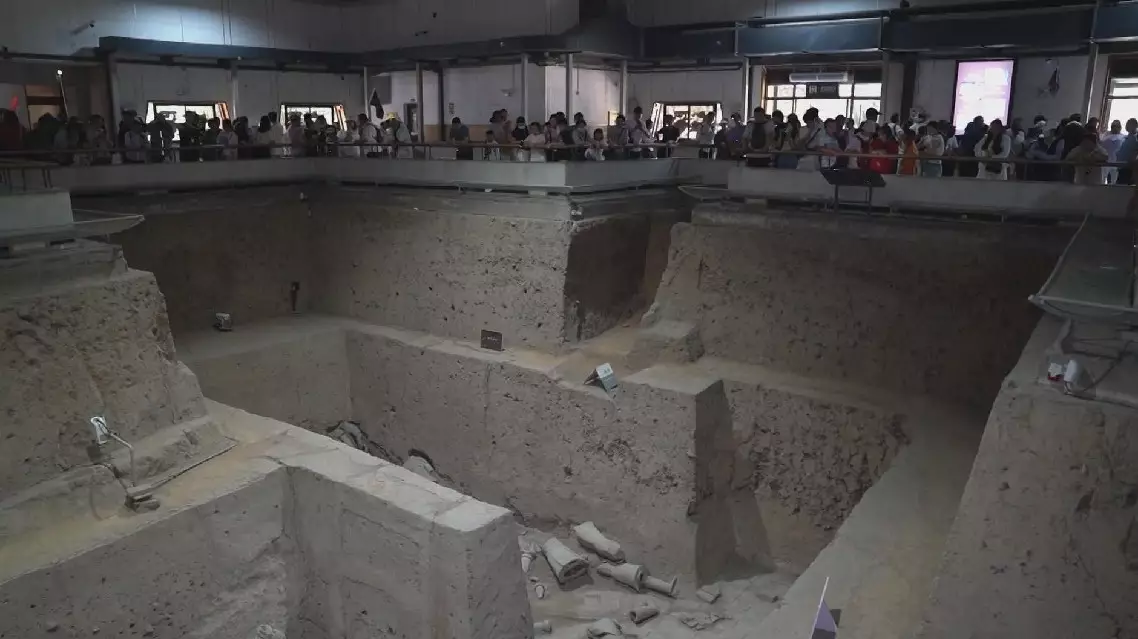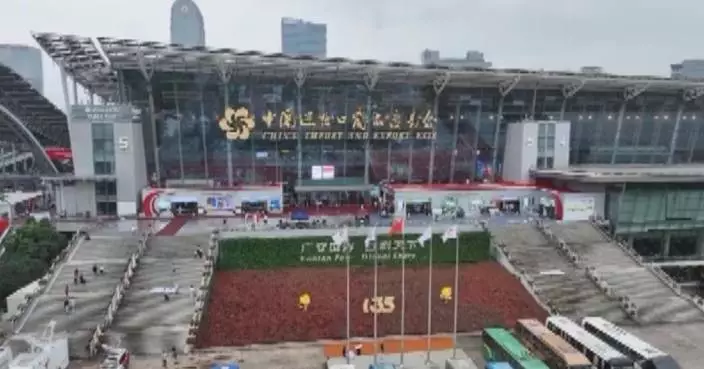The Emperor Qinshihuang's Mausoleum Site Museum, which houses the world-renowned iconic Terracotta Warriors in Xi'an, capital of northwest China's Shaanxi Province, has launched an innovative online platform allowing foreign tourists to book tickets and pay in their local currencies.
The museum has been bustling with visitors from across the world, including tour groups and individual travelers. Many foreign tourists have booked their tickets in advance through the new platform, Overseas Integration Service Platform, which covers 39 countries and regions in 24 languages and 29 currencies.
Nearly 900 platform bookings have been made since its launch 20 days ago.
"The services I feel very good. It feels very convenient, very easy. (In the future I) may take my friends here," said an Australian study tour student.
"I'll bring Australians, Americans, and people from other countries to China to see beautiful things," another Australian student added.
Museum Vice President Zhou Ping noted the benefits of diversifying ticket sales through multiple periods.
"When we have a sufficient number of tickets for both domestic and international visitors, international visitors can avoid our 'golden week' holiday seasons and visit our museum at their own convenience," said Zhou.
Discovered in 1974, the army of Terracotta Warriors was built by Emperor Qinshihuang of the Qin Dynasty (221 B.C.-207 B.C.), who unified China for the first time.

Ticket booking service improved for int'l tourists to Terracotta Warriors Museum
The year of 2024 marks the 75th anniversary of diplomatic relations between China and Hungary, with Shanghai highlighting the significant impact of Hungarian culture, exemplified by poet Sandor Petofi and architect Laszlo Hudec.
A special program on China Global Television Network (CGTN) that aired on Thursday opened with a reflection on the powerful words of Sandor Petofi, a revered 19th-century Hungarian poet.
His lines "Liberty and love. These two I must have. For my love, I'll sacrifice my life. For liberty, I'll sacrifice my love," resonated with Chinese audiences, largely due to the translation efforts of Lu Xun, a pivotal figure in modern Chinese literature.
In 2007, to commemorate this deep historical connection, the Hungarian government donated a sculpture of Sandor Petofi to Shanghai's Lu Xun Park.
This statue not only symbolizes the enduring friendship between the two countries but also highlights the cultural bridges built by figures like Lu Xun, who introduced Petofi's profound words to Chinese readers.
Another notable Hungarian, the Slovak-Hungarian architect Laszlo Hudec, spent approximately three decades in Shanghai from 1918 onwards, leaving an indelible mark on the city's architectural landscape.
He designed over 60 buildings, significantly enriching Shanghai's skyline with a blend of European architectural styles.
Bence Lengyel, a Hungarian student pursuing his postgraduate degree in international relations at Renmin University of China in Beijing, outlined Hudec's architectural contributions.
"So, basically this Wukang Mansion is located in Shanghai's former French concession area. And this building was built in 1924, and it was celebrated for its unique Renaissance style. And here, we can see some pictures how does the building looks from the inside. Because now, it still operates as these apartments. So people are still living in this big building, so it is forbidden for visitors to enter. But thanks to these pictures, we can get a small insight how does this building look from the inside," Lengyel explained.
The journey through Hudec's legacy also includes the Grand Cinema, designed in 1933 and recognized as a pioneering example of Art Deco in China.
Lengyel shared a personal memory: "One of my highlights during my five years living in China was definitely when I have visited the Grand Theatre here in Shanghai with my friend. Because four years ago, when I was studying in Shanghai, I was studying Chinese and we went in to watch a movie in Shanghainese. So we came to this theater and right after the movie has ended, we got out of the theater and we saw that big plaque right next to the front door. And that was the time when we realized that this Grand Theater was also built by Hudec Laszlo."
Adjacent to the cinema stands the Park Hotel, another Hudec masterpiece, which was Shanghai's tallest building for over five decades.
"So basically, this Park Hotel is one of my favorites. And after reading so much about his journey from Hungary to becoming a well-celebrated architect in Shanghai, I think it's truly inspirational and I'm happy that I can share the same cultural heritage as him. And I think his own ideas and designs [are] what made him so famous in Shanghai," Lengyel reflected.
Decades of cultural exchanges between China and Hungary have significantly enriched Shanghai's architectural and cultural landscape, deepening the understanding and appreciation of Hungary's contributions to China.

China celebrates Hungarian cultural legacy through poetry, architecture










